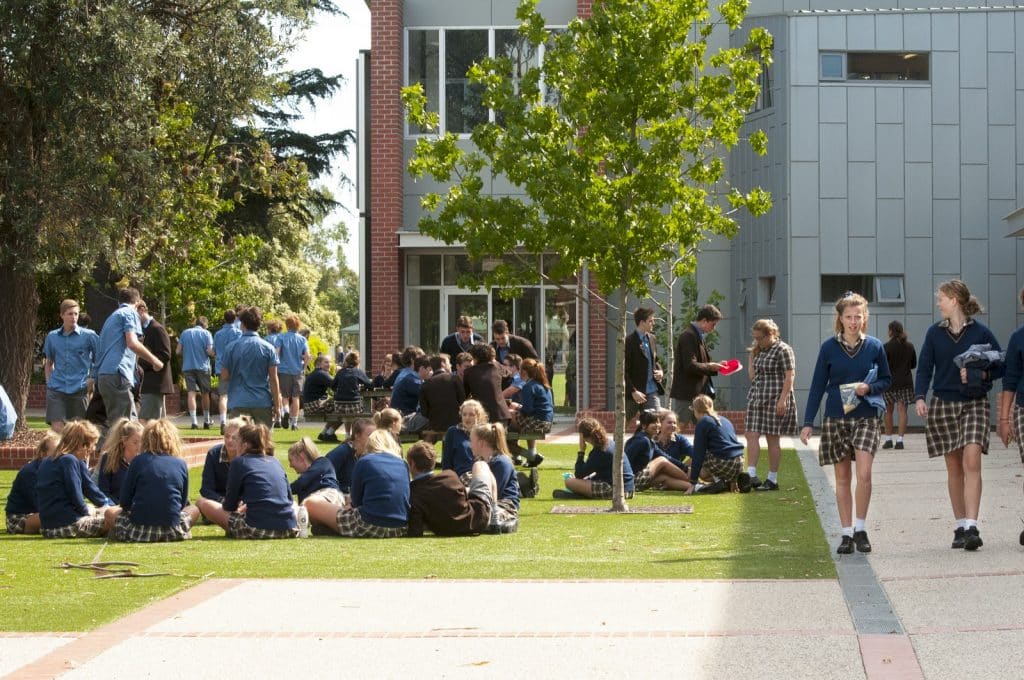
High school students should only go to school for four days per week. They should spend one day a week using well-crafted blended learning. For what have we learned if after COVID we go back to where we were prior? There are numerous good reasons as to why this should be the model of education that we pursue in a post-pandemic world.
Reason 1: Improved learning
Teachers who have successfully adapted online learning have understood that shortcomings in everyday classrooms are highlighted if blended online learning is not well designed. This is an important insight that the recent experience has revealed. Poor classroom practice is amplified in an online learning space.
The great benefit of the well designed and considered online learning is that students can learn at their own pace, in a structured environment, with their peers or individually. It is ideal for students who are shy, those who are distractible, those who are gifted and those who like structured, self-paced modules. Online learning teaches the value of being organised.
The learning can be complemented by face-to-face conferencing as required. Indeed little-used forms of teaching – such as co-teaching – can be applied to maximise the benefit to students working online.
In terms of attendance, of course, rolls would still be marked and mandatory course hours still completed.
Reason 2: Greater equity for children with particular needs
On the day that students would spend at home (as timetabled by their school), those students who have access to fewer resources can come on campus and use the library to do their classes. Additionally, those students who by necessity must be at school would also do so.
The greatest benefit is for those students who have a need for additional face-to-face time due to their particular learning needs. The best place where this is done is at school.
This means that using well-designed online resources actually frees up additional resources to support those most in need – a real equity and access gain for those left behind during the pandemic, and those more generally always left behind due to competition for limited resources.
Reason 3: Visible learning
During this period of home-based schooling and home-based work, parents have been, for the first time, able to see behind the veneer of school gates and classroom walls. This means that they have heard and seen what happens in a classroom. This exposure is important for parents to understand how education works. It has created a new respect for teachers. This is important, as is the capacity for this to bring new levels of accountability of the education sector to parents. I call this ‘visible learning’ and see it as an essential component of future classrooms.
Reason 4: Improved environmental outcomes
Online learning has meant less printing, less commuting and less wasted time. Evidently, the environment has improved during the lockdown period. To go back to the hurry of the world prior to the period of forced slowdown and reflection would be madness. That was for then – but with the benefit of time we can plan a world we want.
Schooling from home one day per week has an additional benefit in that students – most likely to suffer most from environmental inaction – will recognise that the new structures respect their fears and are doing something to ameliorate them. Moreover, it will role model to students that intelligent design and creative problem solving can be applied to real world present problems. Systems can bend to good ideas rather than being inflexible in the light of evidence suggesting alternatives might be better.
Reason 5: Lower costs
The delivery of online learning means that the actual cost of education can be reduced making it more affordable, more accessible and more available. Less travel means less spending and less time in unproductive commuting. Whilst there would need to be some cost incurred in the initial investment in staff time to create well-considered models of what will work best and how, once this investment has been made, the model is extremely low cost to iterate and improve.
Reason 6: Improved use and longevity of infrastructure
There are rational economic reasons as to why high schoolers should attend school four days per week and do the fifth day at home. Fewer people moving means that the roads will be less congested meaning economic productivity will rise. Families will have more time. Moreover, the actual roads and transportation infrastructure will be less utilised thus increasing their longevity.
Other considerations
Whilst there may be an impact on families, evidence has shown that modern, efficient workplaces can be structured around either a four-day week or be just as productive if parents work from home a day a week. This needs to be considered urgently – post-COVID, people will not accept the arbitrary nature of long ‘at work’ hours if productive work can be done at home.
In summary
With the rush to re-open high schools, it seems to me wasteful if a huge opportunity to restructure how schooling is done is not taken seriously. Policy-makers need to urgently consider what schools do and how, and then make changes that are consistent with the insight gained from the pandemic experience. Four-days at school for high schoolers seems an easy starting point.
READ ALSO:A new start at school





